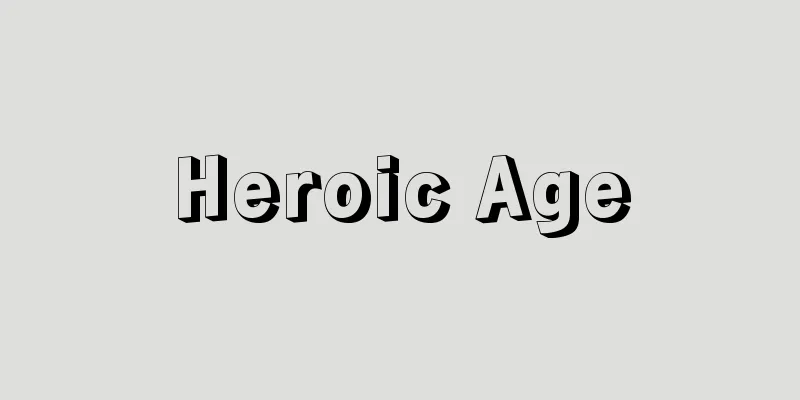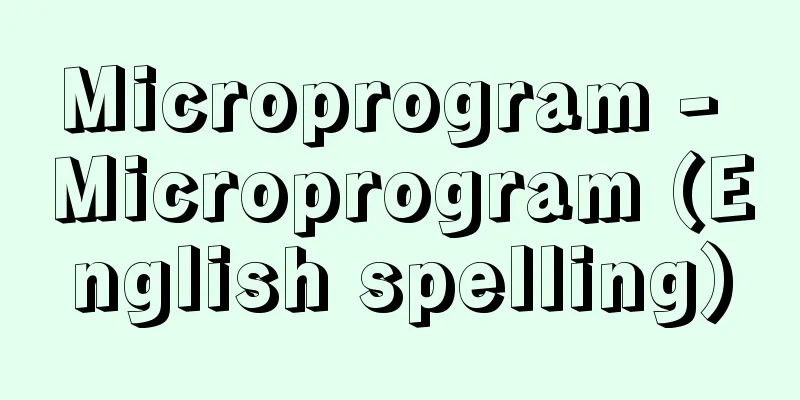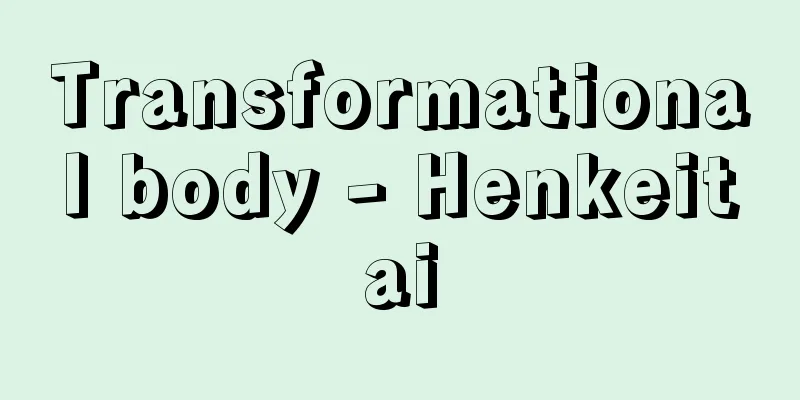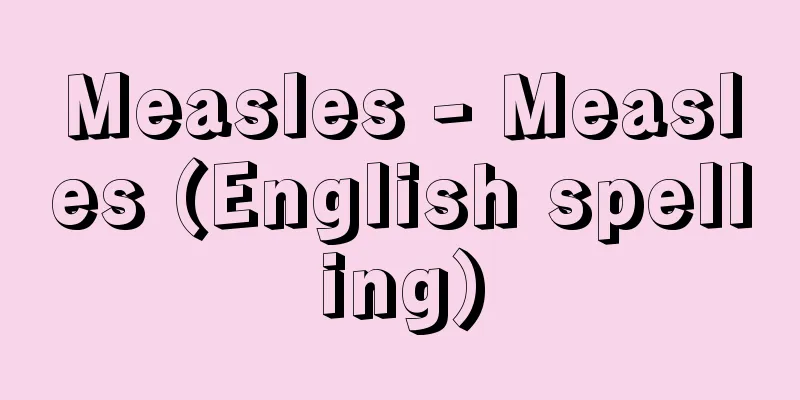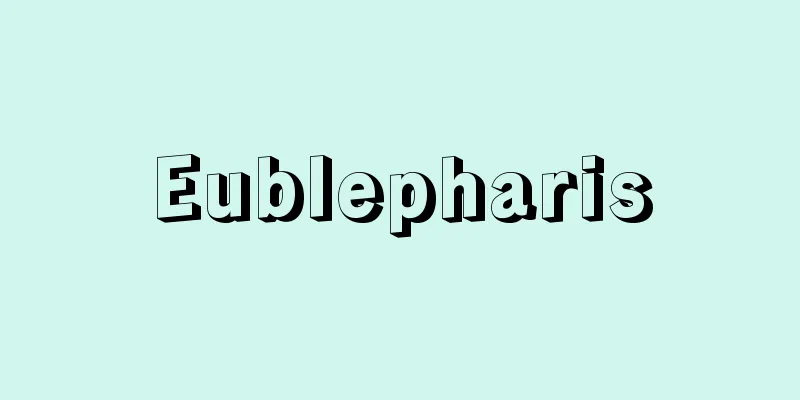Acute heart failure
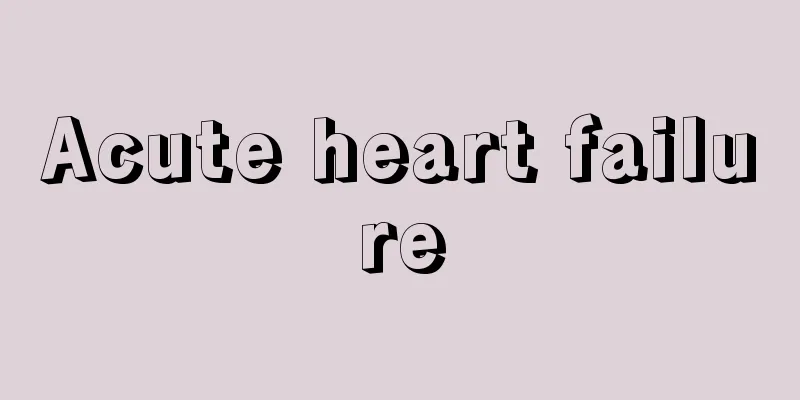
|
Initial treatment (Figure 3-2-3) Initial treatment aims to (1) save the patient's life and stabilize vital signs, (2) improve subjective symptoms such as dyspnea, and (3) alleviate organ congestion. Treatment is selected based on the severity of the condition, assessed using the Killip classification, Nohria-Stevenson profiling, echocardiography, arterial blood gas analysis, and, if necessary, hemodynamic evaluation using Swan-Ganz catheterization. The presence or absence of pulmonary congestion, systemic congestion, or a combination of both is diagnosed. In particular, it is necessary to distinguish whether congestion is primarily due to redistribution of blood flow to the pulmonary vascular bed or fluid overload. In the former case, vasodilators are administered, and in the latter case, diuretics are administered. In cases of peripheral circulatory failure or hypotension (less than 90 mmHg), catecholamines are administered. If the patient is in a state of cardiac arrest on arrival at the hospital, life-saving measures similar to those for advanced cardiovascular life support (ACLS) are performed. In many patients, blood pressure is maintained but pulmonary congestion is present, which can be rapidly alleviated by nitrate spray or sublingual administration. Oxygen therapy is essential to improve dyspnea and organ hypoperfusion, and the goals are to achieve blood oxygen saturation of 95% or higher and blood oxygen partial pressure of 80 mmHg or higher. If tachypnea, labored breathing, or hypoxemia do not improve with nasal cannula or face mask, noninvasive positive pressure ventilation (NPPV) is initiated using a tight-fitting mask. In patients with ineffective NPPV, decreased level of consciousness, difficulty in expectorating, or high risk of aspiration, endotracheal intubation is performed. If hemodynamics does not stabilize despite appropriate drug therapy, intraaortic balloon pumping (IABP) or percutaneous cardiopulmonary support (PCPS) are indicated. Treatment policy by pathology (Figure 3-2-4) [⇨5-3-4)] 1) Acute decompensated heart failure: a) New-onset acute heart failure: Relieve symptoms while simultaneously diagnosing the pathology and severity of the heart failure. If the underlying disease is acute coronary syndrome, arrhythmia, valvular disease, cardiac tamponade, or pulmonary thromboembolism, treat the underlying condition. b) Acute exacerbation of chronic heart failure: Aggravating factors are more likely to be extracardiac factors such as poor medication adherence and excessive fluid and salt intake than myocardial ischemia or arrhythmia. Therefore, there are cases where the condition improves with just rest and salt restriction. Treatment is based on diuretics and vasodilators, and if these do not provide sufficient improvement, cardiac inotropes are added. 2) Hypertensive acute heart failure: This disease is caused by hypertension, and the left ventricular ejection fraction is usually normal or, if decreased, is often mild. Pulmonary congestion is present, but there is little excess of fluid, and pulmonary congestion develops due to a shift of fluid to the pulmonary vascular bed (vascular failure), so the basis of treatment is blood pressure management. 3) Acute cardiogenic pulmonary edema: Rapid respiratory management and improvement of pulmonary congestion are performed. NPPV is effective along with sublingual or spray nitrates, and artificial respiration management via endotracheal intubation should be avoided whenever possible. After administration of a diuretic, a vasodilator should be used while paying close attention to blood pressure. Carperitide, which has both vasodilatory and diuretic effects, is also effective. In patients with not only pulmonary congestion but also reduced cardiac output, PDEIII inhibitors and adenylate cyclase activators, which are cardiotonic drugs with vasodilatory effects, are used. 4) Cardiogenic shock: Hypoxemia, arrhythmia, and decreased circulating fluid volume can cause shock, and improving these conditions is essential. In particular, relative and absolute decreases in left ventricular filling pressure must be excluded as a cause of hypotension. Fluid loss is responsible for shock in 10-15% of patients with acute myocardial infarction. Other conditions that must be excluded include right ventricular infarction, cardiac tamponade, and pulmonary thromboembolism. If there are no signs of left ventricular volume overload, saline is administered intravenously. Dopamine is recommended for cardiogenic shock with a systolic blood pressure of less than 90 mmHg. Depending on the blood pressure response, dopamine may be increased, dobutamine may be administered in combination, or a PDEⅢ inhibitor may be administered in combination. Patients who are resistant to these treatments may be candidates for circulatory support, including IABP. Norepinephrine may be required to temporarily maintain hemodynamics or in cases of sepsis. If the underlying disease is an acute coronary syndrome, emergency coronary angiography should be performed and coronary intervention should be considered. In addition, mechanical complications of acute myocardial infarction (papillary muscle failure, ventricular septal perforation, cardiac rupture), myocarditis, valvular insufficiency, aortic dissection, pulmonary thromboembolism, prosthetic valve failure, cardiac tamponade, etc. should be diagnosed. 5) Acute right heart failure: Causes of acute right heart failure, excluding cases secondary to left heart failure, include decreased contractility (right ventricular infarction, arrhythmogenic right ventricular dysplasia), volume overload (acute tricuspid regurgitation, collapse of Fontan circulation, etc.), increased afterload (pulmonary thromboembolism, primary pulmonary hypertension, etc.), and diastolic dysfunction (cardiac tamponade, constrictive pericarditis). In addition to treating the underlying disease, efforts are made to reduce right ventricular afterload, increase contractile force, and appropriately control preload. PDEIII inhibitors alone or in combination with dobutamine are useful for reducing pulmonary vascular resistance and increasing right ventricular contractile force. In cases of severe pulmonary hypertension, a combination of prostaglandin preparations, endothelin antagonists, NO inhalation, and PDE5 inhibitors is used. 6) High-output heart failure: Priority is given to treatment of underlying diseases such as sepsis, hyperthyroidism, anemia, shunt disorders such as congenital heart disease, beriberi, and Paget's disease. Drug therapy (Table 3-2-1) The basic policy for treatment is to select medication based on hemodynamic assessment. Vasodilators are used for pulmonary congestion, and diuretics for systemic congestion. Inotropes are used for peripheral circulatory failure (Figure 3-2-5). 1) Sedation: Morphine acts centrally, and its sedative effect relieves the patient's restlessness and dyspnea. For the cardiovascular system, it dilates the arterioles and systemic veins, but the effect is stronger in the venous system. Dilation of the arterioles reduces afterload, and dilation of the venous system reduces venous return and relieves pulmonary congestion. Caution is required in cases of hypotension, bradycardia, and advanced atrioventricular block. Furthermore, it is prone to causing respiratory depression, so as a general rule it should not be administered to patients with intracerebral hemorrhage, decreased consciousness, bronchial asthma, or COPD. 2) Diuretics: a) Loop diuretics: Loop diuretics such as furosemide are fast-acting and reduce organ congestion such as pulmonary congestion and edema. However, patients with heart failure often have complicated renal dysfunction, requiring higher doses than usual. If a sufficient diuretic effect cannot be achieved with a single intravenous injection, continuous intravenous infusion may be effective. Furthermore, to reduce the diuretic effect of furosemide, the combined use of diuretics with different sites of action (loop diuretics and thiazides or spironolactone) is effective. b) Vasopressin antagonists: Vasopressin V1a receptors are found in vascular smooth muscle and platelets, and cause vasoconstriction and cardiac hypertrophy, while V2 receptors are found in the renal collecting duct and cause water reabsorption. In heart failure, vasopressin secretion is increased, causing hyponatremia, which is one of the important factors determining prognosis. The V2 receptor antagonist (tolvaptan), which suppresses this, is expected to be a treatment for refractory heart failure, but in clinical trials conducted so far, although it has improved subjective symptoms and weight, its effectiveness in terms of life prognosis has not been proven. 3) Vasodilators: Diuretics and vasodilators (nitrates, carperitide, etc.) are effective for acute cardiogenic pulmonary edema. Generally, vasodilators are the first choice for hypertension, ischemia, mitral regurgitation, etc., but diuretics should be used primarily in cases of significant congestion. The use of vasodilators should be avoided in patients with cardiogenic shock who have a systolic blood pressure of less than 90 mmHg. In addition, particular attention should be paid to lowering blood pressure in patients with renal dysfunction. a) Nitrates: Nitrates such as nitroglycerin and ISDN administered sublingually, as a spray, or intravenously are effective in relieving pulmonary congestion. Nitrates stimulate guanylate cyclase in vascular smooth muscle cells via NO, dilating veins at low doses and arteries at high doses, reducing preload and afterload. In addition, their coronary artery dilating effect makes them widely used in the treatment of acute heart failure caused by ischemia. Side effects include a fall in blood pressure and a decrease in arterial oxygen saturation due to increased intrapulmonary shunting. Furthermore, tolerance develops early (16 to 24 hours) with relatively high intravenous doses, but this can be prevented by adjusting the dosage or administering the drug intermittently. b) Nicorandil: Nicorandil has a venous dilating effect as a nitrate drug, as well as an arterial dilating effect due to its ATP-sensitive potassium (K ATP ) channel opening effect. Nicorandil is less likely to cause drug resistance and less likely to cause excessive hypotension than nitrates. Opening of K ATP channels exerts a myocardial protective effect through the suppression of calcium overload by preconditioning and shortening of action potentials, and is therefore expected to be effective against acute heart failure due to ischemia. c) Carperitide: Carperitide (hANP) exerts a load-reducing effect through vasodilatory and sodium diuretic effects. It reduces pulmonary capillary pressure and increases cardiac output, but unlike other vasodilators and inotropes, it does not increase heart rate. This is thought to be due to its sympathetic nerve inhibitory effect. It is started with continuous intravenous infusion at a low dose [0.025-0.05 μg/kg/min (0.0125 μg/kg/min in some cases)], but care must be taken to avoid a drop in blood pressure and deterioration of renal function. On the other hand, although concerns about deterioration of renal function have been denied with nesiritide (BNP), which is used in the United States, there is no evidence that it improves prognosis. 4) Cardiac inotropes: Inotropes are effective in improving hemodynamics and clinical findings in the short term, but they also increase myocardial oxygen demand and pose the risk of worsening life prognosis due to arrhythmias and myocardial ischemia, so careful attention must be paid to the indications, drug selection, dosage, and administration period according to the pathological condition. a) Catecholamines: The majority of beta-adrenergic receptors present in cardiac muscle are beta- 1 receptors, which exert an effect of enhancing myocardial contraction (positive inotropic effect), increasing the rate of myocardial relaxation (lusitropic effect), increasing heart rate (chronotropic effect), and increasing impulse conduction velocity (dromotropic effect). On the other hand, stimulation of beta- 2 receptors present in vascular smooth muscle exerts a vasodilatory effect. Stimulation of alpha- 1 receptors, which are mainly present in vascular smooth muscle, exerts vasoconstriction, and stimulation of cardiac alpha- 1 receptors exerts a mild increase in contractile force. i) Dobutamine: Dobutamine is a synthetic catecholamine that stimulates β1 , β2 , and α1 receptors. At low doses of 5 μg/kg/min or less, it reduces peripheral vascular resistance and pulmonary capillary pressure through its vasodilatory effect. At doses of 10 μg/kg/min or less, the increase in heart rate is only mild, making it easy to use for ischemic heart disease. ii) Dopamine: Dopamine is an endogenous catecholamine and a precursor of noradrenaline. From low doses (2 μg/kg/min or less), it exerts a diuretic effect by increasing glomerular filtration rate through renal artery dilation and by acting directly on renal tubules. At medium doses (2-10 μg/kg/min), it exerts a positive inotropic effect, increases heart rate, and has a vasoconstrictor effect. At high doses (10-20 μg/kg/min), α1 stimulatory effects predominate, causing an increase in vascular resistance. iii) Noradrenaline: Noradrenaline is an endogenous catecholamine that exerts positive inotropic and positive chronotropic effects by β1 stimulating action. It is also a strong vasoconstrictor that acts on peripheral α receptors. It is used when recovery from cardiogenic shock is difficult even with other cardiac inotropes and correction of circulating blood volume. Although arterial pressure rises due to an increase in peripheral vascular resistance, it increases myocardial oxygen consumption, so its use as a cardiac inotrope alone should be avoided. b) Digitalis: Digoxin is inferior to catecholamines as a cardiac inotropic agent, but is useful in improving hemodynamics. It is particularly suitable for heart failure accompanied by tachycardial atrial fibrillation. However, its administration is not recommended for acute heart failure caused by acute myocardial infarction or myocarditis. It is contraindicated in second and third degree atrioventricular block, sick sinus syndrome, Wolff-Parkinson-White syndrome, and hypertrophic obstructive cardiomyopathy. c) PDE III inhibitors (milrinone, olprinone): The advantages of PDE III inhibitors are: 1) they are effective against catecholamine resistance as they are not mediated by beta-receptors, 2) they have both vasodilatory and cardiotonic effects and cause a smaller increase in myocardial oxygen consumption than catecholamines, and 3) they are less likely to develop resistance than nitrates. They have a rapid onset of action after the start of intravenous administration, and the improvement in hemodynamics is almost dose-dependent. They are also effective in the acute exacerbation of chronic heart failure when beta-blockers are being administered. d) Adenylate cyclase activators (colforsin daropate): These act in a similar manner to PDE inhibitors, but it is important to note that the onset of effect is slow and there is a large increase in heart rate, as well as that they have proarrhythmic properties. Nonpharmacological treatments 1) Mechanically assisted circulation: Indications for mechanical circulatory support in acute heart failure are NYHA class IV refractory heart failure resistant to drug therapy, with a systolic blood pressure of 90 mmHg or less, a cardiac index of 2.0 L/min/m2 or less , and a pulmonary artery wedge pressure of 20 mmHg or less. Mechanical circulatory support includes IABP, PCPS, and ventricular assist devices (VADs). Short- and medium-term support is provided to patients with difficulty weaning from cardiopulmonary bypass, extensive myocardial infarction, fulminant myocarditis with hemodynamic collapse, and post-heart transplant patients with severe rejection, and is used as a bridge to weaning or long-term support. Long-term support is provided to patients with refractory heart failure that meets the criteria for heart transplantation (dilated cardiomyopathy, dilated phase hypertrophic cardiomyopathy, ischemic cardiomyopathy, etc.) and is primarily used as a bridge to heart transplantation. 2) Acute blood purification treatment: Acute blood purification is necessary for patients with reduced renal function who are unable to obtain diuresis. The main objectives of acute blood purification for heart failure include (1) treating pulmonary edema, (2) improving acidosis, (3) correcting electrolyte abnormalities, (4) securing space for infusion, and (5) removing humoral mediators. Continuous veno-venous hemofiltration (CVVH), which has little effect on hemodynamics, is widely used, but if you only want to remove water, there is the simple extracorporeal ultrafiltration (ECUM), which does not use filtrate. Continuous hemodiafiltration (CHDF) can remove cytokines and improve hemodynamics, but there are pros and cons to the clinical use of this method. [Tsutsui Hiroyuki] ■References <br /> Izumi Toru, et al.: Guidelines for the Treatment of Acute Heart Failure (2011 revised edition), Japan Circulation Society, 2011. http://www.j-circ.or.jp/guideline/pdf/JCS2011_izumi_h.pdfTsutsui Hiroyuki: Heart failure medications and cardiotonic drugs. Revised edition of Therapeutic Drugs Illustrated (edited by Yamada Nobuhiro), pp53-58, Yodosha, Tokyo, 2009. Tsutsui Hiroyuki, Kinukawa Shintaro: Medical treatment of acute heart failure. Color edition of Cardiovascular Medicine, Basics and Clinical Practice (edited by Kawana Masatoshi, et al.), pp338-349, Nishimura Shoten, Tokyo, 2010. Intravenous drugs used in Japan to treat acute heart failure (Izumi et al., 2011) Table 3-2-1 Initial response to acute heart failure Figure 3-2-3 Treatment flow chart for acute heart failure Figure 3-2-4 Mechanism of action of heart failure medications and inotropes Figure 3-2-5 Source : Internal Medicine, 10th Edition About Internal Medicine, 10th Edition Information |
|
初期治療(図3-2-3) 初期治療では,①救命とバイタルサインの安定,②呼吸困難などの自覚症状の改善,③臓器うっ血の軽快をはかる.Killip分類,Nohria-Stevensonのプロファイリング,心エコー検査,動脈血液ガス分析,さらに必要な場合にはSwan-Ganzカテーテル法による血行動態評価により重症度評価を行い,それに基づいた治療法を選択する.肺うっ血,体うっ血,あるいはその両者の合併の有無を診断する.特に,肺血管床への血流再配分が主体のうっ血か,体液過剰が主体のうっ血かを鑑別し,前者の場合は血管拡張薬,後者の場合は利尿薬を投与する.末梢循環不全もしくは低血圧(90 mmHg未満)ではカテコールアミンを投与する. 病院到着時に心肺停止状態であれば,ACLS(advanced cardiovascular life support)に準じた救命処置を行う.多くの患者では,血圧は保たれているが肺うっ血があり,硝酸薬スプレーや舌下で急速に軽減する.酸素療法は呼吸困難の改善と,臓器低灌流の改善のために必須であり,血中酸素飽和度95%以上,血中酸素分圧80 mmHg以上を目指す.鼻カヌレやフェイスマスクにても改善されない頻呼吸,努力呼吸,低酸素血症は密着型のマスクによる非侵襲的陽圧呼吸(noninvasive positive pressure ventilation:NPPV)を開始する.NPPV無効,意識レベル低下,喀痰排出困難,誤嚥の可能性が高い例では,気管内挿管を行う.適切な薬物治療でも血行動態が安定しない場合には大動脈内バルーンパンピング(intraaortic balloon pumping:IABP)や経皮的心肺補助(percutaneous cardiopulmonary support:PCPS)の適応となる. 病態別の治療方針(図3-2-4)【⇨5-3-4)】 1)急性非代償性心不全: a)新規発症の急性心不全:症状を軽減すると同時に心不全の病態と重症度を診断する.急性冠症候群,不整脈,弁疾患,心タンポナーデ,肺血栓塞栓症などが原因疾患である場合は,それらに対する根本的治療を行う. b)慢性心不全の急性増悪:増悪因子としては心筋虚血や不整脈などより,服薬不徹底や水分・塩分の摂取過剰など心外要因が多い.したがって,安静や塩分制限だけで改善する場合もある.利尿薬と血管拡張薬を基本とした治療を行い,これらで改善が不十分の場合には強心薬を追加する. 2)高血圧性急性心不全: 高血圧が原因疾患で,左室駆出率は正常か低下しても軽度のことが多い.肺うっ血を呈するが,体液の過剰は少なく肺血管床への体液シフトによって肺うっ血を発症する(vascular failure)ため,治療の基本は血圧管理である. 3)急性心原性肺水腫: 迅速な呼吸管理と肺うっ血の改善を行う.硝酸薬舌下やスプレーとともにNPPVが有効であり,気管内挿管による人工呼吸管理はなるべく回避する.利尿薬を投与後に血圧に注意しながら血管拡張薬を使用する.血管拡張作用と利尿作用の両者を併せ持つカルペリチドも有効である.肺うっ血のみならず心拍出量低下を伴う患者では血管拡張作用を有する強心薬であるPDEⅢ阻害薬やアデニル酸シクラーゼ賦活薬を用いる. 4)心原性ショック: 低酸素血症,不整脈,循環体液量減少はショックの原因となり,これらの改善は必須である.特に,血圧低下の原因として左室充満圧の相対的,絶対的低下を除外する.急性心筋梗塞患者の10~15%には体液喪失に起因するショックが含まれる.その他,右室梗塞,心タンポナーデ,肺血栓塞栓症なども除外する必要がある.左室容量負荷の徴候が認められない場合,生理的食塩水を静脈内投与する.収縮期血圧90 mmHg未満の心原性ショックに対してはドパミンが推奨される.血圧の反応をみてドパミンの増量やドブタミンの併用,さらにPDEⅢ阻害薬の併用を行う.これらの治療に抵抗する患者にはIABPを含めた補助循環の適応がある.一時的な血行動態維持や敗血症を伴う場合にはノルアドレナリンが必要となる. 原因疾患が急性冠症候群の場合には,緊急冠動脈造影を行い,冠動脈インターベンションを考慮する.また,急性心筋梗塞の機械的合併症(乳頭筋不全,心室中隔穿孔,心破裂),心筋炎,弁閉鎖不全,大動脈解離,肺血栓塞栓症,人工弁不全,心タンポナーデなどを診断する. 5)急性右心不全: 左心不全に続発する場合を除いた急性右心不全の原因には,収縮低下(右室梗塞,不整脈源性右室異形成症),容量負荷(急性三尖弁逆流,Fontan循環の破綻など),後負荷増大(肺血栓塞栓症,原発性肺高血圧など),拡張障害(心タンポナーデ,収縮性心外膜炎)がある.原因疾患への治療と併せ,右室後負荷の軽減,収縮力の増強,前負荷の適切なコントロールを行う.PDEⅢ阻害薬単独,あるいはドブタミンとの併用は肺血管抵抗の軽減と右室収縮力増強に有用である.肺高血圧が高度な場合はプロスタグランジン製剤,エンドセリン拮抗薬,NO吸入,PDE5阻害薬の併用を行う. 6)高拍出性心不全: 敗血症,甲状腺機能亢進,貧血,先天性心疾患などの短絡疾患,脚気,Paget病などの原因疾患に対する治療を優先する. 薬物療法(表3-2-1) 治療の基本方針として血行動態評価に基づいて治療薬を選択する.肺うっ血には血管拡張薬を,体うっ血には利尿薬を使用する.末梢循環不全には強心薬を用いる(図3-2-5). 1)鎮静: モルヒネは中枢性に働き,その鎮静作用により患者の不穏や呼吸困難を軽減する.心血管系に対しては,細動脈や体静脈を拡張するが,静脈系でより強い.細動脈の拡張により後負荷は軽減し,また静脈系の拡張により静脈還流量は減少し,肺うっ血は軽減する.低血圧,徐脈,高度房室ブロックでは注意を要する.さらに,呼吸抑制が起こりやすく脳内出血,意識低下,気管支喘息,COPDには原則として投与しない. 2)利尿薬: a)ループ利尿薬:フロセミドなどのループ利尿薬は,即効性で肺うっ血や浮腫などの臓器うっ血を軽減する.しかし,心不全では腎機能障害を合併していることが多く,通常より高用量を必要とする.1回静注投与で十分な利尿効果が得られない場合には,持続静注が有効な場合もある.また,フロセミドによる利尿効果減弱には,作用部位の異なる利尿薬の併用(ループ利尿薬とサイアザイドあるいはスピロノラクトン)が有効である. b)バソプレシン拮抗薬:バソプレシンV1a受容体は血管平滑筋や血小板などに存在し血管収縮や心肥大を引き起こし,V2受容体は腎集合管に存在し水の再吸収をもたらす.心不全ではバソプレシン分泌が亢進し,低ナトリウム血症を引き起こし,重要な予後規定因子の1つである.これを抑制するV2受容体拮抗薬(トルバプタン)は難治性心不全治療薬として期待されているが,いままで行われた臨床試験では,自覚症状や体重を改善するものの生命予後に対する有効性は証明されていない. 3)血管拡張薬: 利尿薬や血管拡張薬(硝酸薬,カルペリチドなど)は,急性心原性肺水腫に有効である.一般的には,高血圧,虚血,僧帽弁逆流などでは血管拡張薬が第一選択であるが,うっ血が著明の場合には利尿薬を主体にする.収縮期血圧90 mmHg未満の心原性ショック患者に対する血管拡張薬の使用は控える.また,腎機能障害例では特に血圧低下に注意を要する. a)硝酸薬:ニトログリセリン,ISDNなど硝酸薬の舌下やスプレーおよび静注投与が肺うっ血の軽減に有効である.硝酸薬はNOを介して血管平滑筋細胞のグアニル酸シクラーゼを刺激し,低用量では静脈を,高用量では動脈を拡張し,前負荷および後負荷を軽減する.また,冠動脈拡張作用により虚血を原因疾患とする急性心不全に汎用される.副作用として血圧低下と肺内シャント増加に由来する動脈血酸素飽和度の低下がある.また,比較的高用量の静注投与により早期(16~24時間)に耐性が発現するが,その予防には投与用量の調節や間欠投与を行う. b)ニコランジル:ニコランジルは,硝酸薬としての静脈拡張作用にATP感受性カリウム(KATP)チャネル開口作用に起因する動脈拡張作用を有する.ニコランジルは硝酸薬に比べて薬剤耐性を生じにくく,過度な降圧をきたしにくい.KATPチャネルの開放は,プレコンディショニングと活動電位短縮によるカルシウム過負荷の抑制を介して,心筋保護効果を発揮することから,虚血による急性心不全に対する有効性が期待される. c)カルペリチド:カルペリチド(hANP)は,血管拡張,Na利尿作用により減負荷効果を発現する.肺毛細管圧を低下させ心拍出量を増加させるが,ほかの血管拡張薬や強心薬と異なり,心拍数を増加させない.これは交感神経抑制作用に起因するものと考えられている.低用量[0.025~0.05 μg/kg/分(場合により0.0125 μg/kg/分)]持続静注で開始するが,血圧低下や腎機能悪化に注意が必要である.一方,米国で使用されているネシリチド(BNP)は,腎機能悪化の懸念は否定されたものの予後の改善は証明されなかった. 4)強心薬: 強心薬は短期的には血行動態や臨床所見の改善に有効であるが,心筋酸素需要を増大し,催不整脈,心筋虚血などによって生命予後を悪化させる危険性もあり,病態に応じた適応と薬剤の選択,投与量,投与期間には十分に注意を払う必要がある. a)カテコールアミン:心筋に存在するβアドレナリン受容体の大部分はβ1受容体であり,心筋収縮増強作用(陽性変力作用),心筋弛緩速度増加(lusitropic effect),心拍数増加(chronotropic effect),刺激伝導速度増加(dromotropic effect)を発揮する.一方,血管平滑筋に存在するβ2受容体刺激は血管拡張作用を示す.おもに血管平滑筋に存在するα1受容体刺激は血管収縮を示し,心筋α1受容体刺激では軽度の収縮力の増強を示す. ⅰ)ドブタミン:ドブタミンは合成カテコールアミンであり,β1,β2,α1受容体刺激作用を有する.5 μg/kg/分以下の低用量では血管拡張作用により末梢血管抵抗および肺毛細管圧を低下させる.10 μg/kg/分以下では心拍数の上昇も軽度で虚血性心疾患に使用しやすい. ⅱ)ドパミン:ドパミンは内因性カテコールアミンであり,ノルアドレナリンの前駆物質である.低用量(2 μg/kg/分以下)から腎動脈拡張による糸球体濾過量の増加と腎尿細管への直接作用により利尿効果を示す.中等量(2~10 μg/kg/分)では陽性変力作用,心拍数増加,血管収縮作用をもたらす.高用量(10~20 μg/kg/分)ではα1刺激作用が優位となり血管抵抗が上昇する. ⅲ)ノルアドレナリン:ノルアドレナリンは内因性カテコールアミンであり,β1刺激作用により陽性変力作用と陽性変時作用を示す.また末梢のα受容体に働く強力な血管収縮薬である.ほかの強心薬ならびに循環血液量の補正によっても心原性ショックからの離脱が困難な場合に用いられる.末梢血管抵抗の増加により動脈圧は上昇するが,心筋酸素消費量を増加させるので強心薬として単独使用は控える. b)ジギタリス:ジゴキシンは強心薬としてはカテコールアミンに劣るが,血行動態の改善に有用である.特に頻脈性心房細動を伴う心不全にはよい適応である.一方で,急性心筋梗塞や心筋炎による急性心不全への投与は推奨されない.2~3度房室ブロック,洞不全症候群,WPW症候群,閉塞性肥大型心筋症は禁忌である. c)PDEⅢ阻害薬(ミルリノン,オルプリノン):PDEⅢ阻害薬の長所は,①β受容体を介さずに効果を発揮するのでカテコールアミン抵抗性にも有効,②血管拡張作用と強心作用を併せもち心筋酸素消費量の増加がカテコールアミンに比し軽度,③硝酸薬に比し耐性が生じにくいことがあげられる.静注開始後の作用発現が速やかで,血行動態の改善効果はほぼ用量依存性である.β遮断薬が投与されている慢性心不全の急性増悪でも有効である. d)アデニル酸シクラーゼ賦活薬(コルホルシンダロパート):PDE阻害薬と同様に作用するが,効果発現が遅く心拍数増加が大であること,催不整脈性に留意する必要がある. 非薬物療法 1)機械的補助循環: 急性心不全における機械的補助循環の適応は,薬物治療抵抗性の難治性心不全でNYHAクラスⅣ,収縮期血圧90 mmHg以下,心係数2.0 L/分/m2以下,肺動脈楔入圧20 mmHg以下を目安とする.機械的補助循環としては,IABP,PCPS,補助人工心臓(VAD)がある.短期・中期的な補助は人工心肺からの離脱困難,広範囲心筋梗塞,血行動態が破綻した劇症型心筋炎,重篤な拒絶反応をきたした心臓移植後などが対象となり,離脱ないし長期補助までのブリッジとして用いられる.長期的な補助は心臓移植適応基準に準じた難治性心不全(拡張型心筋症,拡張相肥大型心筋症,虚血性心筋症など)を対象におもに心臓移植までのブリッジ(bridge to transplantation)として用いられる. 2)急性血液浄化治療: 腎機能が低下し,利尿が得られない患者では,急性血液浄化が必要となる.心不全に対する急性血液浄化法のおもな目的として,①肺水腫の治療,②アシドーシスの改善,③電解質異常の補正,④輸液スペースの確保,⑤体液性の介在物質(humoral mediator)の除去などがあげられる.血行動態への影響が少ない持続性静脈・静脈血液濾過(CVVH)が広く用いられているが,水分のみを除去したい場合は簡便で濾過液を用いない体外限外濾過法(ECUM)がある.持続的血液濾過透析(CHDF)はサイトカイン除去が可能であり,血行動態も改善するが,本法の臨床使用には賛否両論がある.[筒井裕之] ■文献 和泉 徹,他:急性心不全治療ガイドライン(2011年改訂版)日本循環器学会,2011.http://www.j-circ.or.jp/guideline/pdf/JCS2011_izumi_h.pdf筒井裕之:心不全治療薬・強心薬.治療薬イラストレイテッド改訂版(山田信博編),pp53-58,羊土社,東京,2009.筒井裕之,絹川真太郎:急性心不全の内科的治療.カラー版循環器病学,基礎と臨床(川名正敏,他編), pp338-349,西村書店,東京,2010. わが国で使用されている急性心不全治療静注薬(和泉ら,2011)"> 表3-2-1 急性心不全の初期対応"> 図3-2-3 急性心不全の治療フローチャート"> 図3-2-4 心不全治療薬および強心薬の作用機序"> 図3-2-5 出典 内科学 第10版内科学 第10版について 情報 |
>>: Acute pericystitis - Acute pericystitis
Recommend
FM broadcasting - FM broadcasting (English spelling)
Broadcasting using frequency modulation (FM). Fre...
Yanagawa Icchosai
Japanese magician. (1) First generation: Date of b...
Kajiwara Kagetoki
A military commander in the early Kamakura period...
Utagawa Toyoharu
He was an ukiyo-e artist of the late Edo period, ...
Scorpionfish (Total cap) - Scorpionfish
A general term for marine fish of the genus Scorpa...
Belobog
...Finally, the deities with the most abstract fu...
Ryokan and the babysitter - Ryokan and the babysitter
A new dance drama. One act. Written by Tsubouchi S...
Irish National Assembly - Dáil Éirean
The Irish parliament was established in Dublin in ...
Inflammatory kyphosis
…It is often seen in the thoracic spine, and depe...
Newfoundland (province)
The easternmost province of Canada. It consists of...
Aloha tribe
…In Hawaiian, aloha means love, kindness, and gre...
Seisin
…For this reason, it can be translated as “posses...
Comb Ant - Comb Ant
…The female lays eggs on the flower spikes of the...
Prosthion
…The facial index is calculated by dividing the f...
Yamagata Domain
This clan ruled over part of the Murayama region ...


